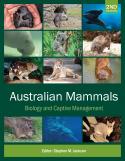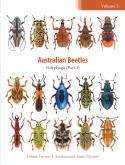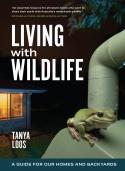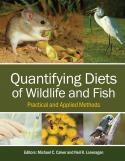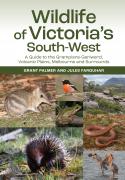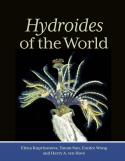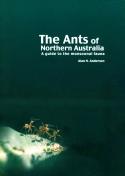The publication of Reintroduction Biology of Australian and New Zealand Fauna nearly 20 years ago introduced the new science of ‘reintroduction biology’. Since then, there have been vast changes in our understanding of the process of reintroductions and other conservation-driven translocations, and corresponding changes in regulatory frameworks governing translocations.
Advances in Reintroduction Biology of Australian and New Zealand Fauna is a timely review of our understanding of translocation from an Australasian perspective, ensuring translocation becomes an increasingly effective conservation management strategy in the future. Written by experts, including reintroduction practitioners, researchers and policy makers, the book includes extensive practical advice and example case studies, identifies emerging themes and suggests future directions.
Conservation practitioners and researchers, as well as conservation management agencies and NGOs will find the book a valuable resource. Although it is based on Australasian examples, it will be of interest globally due to synergies with reintroduction programs throughout the world.
2015 Whitley Awards Certificate of Commendation for Conservation Biology.
- Page 7Abstract
Reintroductions have become an integral part of conservation management for a variety of threatened species in Australia and New Zealand. This popularity largely reflects the dramatic impact that exotic species have had on the indigenous fauna of these countries. With control and eradication of several of the most detrimental exotic species from defined areas, reintroductions can be initiated in the absence of the pressures that caused the original extinction. Despite the volume of reintroductions being undertaken, the probability that a project will achieve the re-establishment of a viable population is not guaranteed. Many of the difficulties associated with reintroductions relate to the inherent challenges animals are exposed to throughout the translocation process and following release. ‘Release strategies’ are components of the reintroduction process that can be deliberately designed to manage these problems. They can, therefore, improve post-release establishment probabilities. We review here several release strategies that are commonly implemented in Australasian fauna reintroductions, summarise the ecological theory underlying their design, and provide examples to highlight their influence on post-release establishment. The selected release strategies include the design of the composition and size of the release group, the timing and number of release events and the selection of release protocols (delayed versus immediate releases).
- Page 17Abstract
The release of individuals at a chosen location is the defining feature of reintroduction programs. However, the choice of an adequate release protocol for translocated individuals can be complicated, particularly for programs with multiple objectives, such as maximising release numbers while minimising impacts on the source population. Limited resources and the biology of species can also generate trade-offs, such as where older individuals have greater survival but are more expensive to translocate or breed. Uncertainty will surround many of these aspects: yet decisions must be made, often within strict time frames. This chapter illustrates how a structured decision-making framework can be used to guide the choice of release strategies in complex reintroduction programs. This approach focuses on clearly specifying objectives, comparing the available actions by their expected outcomes and explicitly considering uncertainties and trade-offs. An example is provided using the release program for the endangered southern corroboree frog Pseudophryne corroboree. For a 10-year release program for this species, mixed releases of eggs and sub-adults are expected to maximise the persistence of both wild and captive populations, while meeting budget constraints. Decision-analytic methods can help managers design transparent and effective release strategies, making rational decisions in the face of uncertainty.
- Page 29Abstract
Despite decades of research into predator control, predation by exotic predators is the leading cause of reintroduction failure in Australia and New Zealand. A variety of methods are used to deal with the threat of predation, including the exclusion and control of predators and improved prey responses. Fenced reserves and islands are becoming increasingly popular reintroduction sites and generally have high reintroduction success. However, in this chapter, we argue that the current emphasis on predator exclusion is short-sighted and does not consider the underlying issue of prey naivety. We call for a new paradigm focusing on improving the ability of prey to co-exist with exotic predators – one that acknowledges behavioural plasticity and natural selection.
- Page 43Abstract
Parasite and other health hazards can pose substantial risks to reintroductions. It is therefore important that managers identify these hazards, estimate the risks they pose and, where deemed necessary, develop ways to manage these risks. A variety of approaches to disease risk assessment have been adopted in the Australasian region. Here we provide a brief review of the most common approaches to managing parasite and other health hazards in reintroduction. We discuss the respective strengths and weaknesses of each method and suggest ways we can improve our disease risk management into the future. In particular, we emphasise that risk assessment should be integrated in the broader decision process of a reintroduction program, maintaining a clear view of the overall management objectives, and then carefully creating and evaluating alternative management actions, including monitoring and surveillance.
- Page 59Abstract
Dispersal behaviour is a critical factor that can influence reintroduction success across multiple stages. To date, most attempts to deal with this issue have focused on either reducing or mitigating dispersal using various management tools, and solutions have focused on initial post-release dispersal without fully recognising or acknowledging the effects ongoing dispersal may have. We advocate for careful consideration of proposed sites for reintroduction, taking into account characteristics of the species (dispersal propensity and probability of mortality for dispersers), and assessments of both the release site and the surrounding landscape, including connectivity, linkages and invasive species management at the landscape scale. In some cases, existing knowledge may enable us to predict the effect of interactions between these species and site characteristics, enabling informed decisions to be made before reintroduction. We emphasise the need for reintroduction planning to incorporate an integrated landscape approach, viewing dispersal as a natural component of a species life history. Under integrated landscape management, the wider landscape beyond reintroduction sites could be managed, with the long-term goals of establishing self-sustaining populations and providing safe opportunities for dispersal and gene flow to recreate natural metapopulations.
- Page 73Abstract
The aim of any trial or experimental reintroduction is to consider key questions relevant to improving the likelihood of population establishment and persistence. These questions relate to the ecology of the focal species and the suitability of the release environment. Although trial reintroductions provide insight, and generate hypotheses relating to an organism’s persistence and establishment, experiments (controlled manipulations with replicates) allow clearer conclusions. However, given that reintroductions often involve threatened species, experiments may be impossible due to small sample sizes and few opportunities for replication. As such, trial reintroductions are often the only option available to get an indication of which factors influence establishment success, habitat use and requirements, tolerance of threats, competition for resources, and social and spatial requirements. Thus trials remain a valuable tool for conservation managers, provided they are interpreted cautiously, with clear understanding of the parameters documented for each trial. Trials can also be combined strategically within an adaptive management framework. Here we outline the roles of trials and experiments, provide some case studies, and offer some advice for handling the limitations inherent in both reintroduction experiments and trials.
- Page 91Abstract
The use of predictive modelling to plan reintroductions and manage reintroduced populations has increased steadily since the mid-1990s, with Australia and New Zealand at the forefront. We overview the types of models commonly used for species reintroductions, focusing on Australian and New Zealand examples. Site selection, release strategies (e.g. number, composition and timing), population viability and management impacts are the key issues often investigated. We discuss how to deal with uncertainties associated with parameter estimation, stochasticity, model selection, integrating modelling approaches and decision making. Finally, we highlight three promising modelling approaches for planning species reintroductions and modelling reintroduced populations: decision theory and optimisation, individual-based modelling and Bayesian hierarchical modelling.
- Page 105Abstract
Assisted colonisation – the translocation of organisms with release in areas outside their indigenous range in response to threats such as climate change – was presented in the scientific literature only a few years ago as a new tool for species conservation. The idea of planned introductions for conservation is a controversial issue, prompting vigorous, and sometimes ill-informed, debate in the scientific literature. The broad consensus was that this represented a bold new direction that had merit but carried great risk. Unacknowledged by most commentators, assisted colonisation (by other names) was already taking place, and in Australia and New Zealand was even a long-accepted part of the conservation management tool kit. In 2013, the IUCN recognised assisted colonisation as a legitimate, if inherently risky, conservation translocation, and set out a comprehensive set of guidelines for its application. We review the history of assisted colonisation, with a focus on Australian and New Zealand projects moving species in response to threats within the indigenous range. We review the current status of assisted colonisation in Australia and New Zealand and present two case studies to illustrate the application of new approaches for assisted colonisation planning: Australia’s western swamp tortoise (Pseudemydura umbrina), and New Zealand’s hihi (Notiomystis cincta). We conclude by considering future directions in the specific application of translocations for climate change mitigation in the region.
- Page 127Abstract
Small population size and isolation impact genetic diversity through random genetic drift and inbreeding, and can lead to reduced population fitness and an increased risk of extinction. Threatened species often exist as small populations that are highly fragmented and thus prone to the effects of random genetic drift and losses of genetic variation. Conservation strategies therefore need to consider how genetic diversity can be maintained or enhanced when undertaking translocations, both when restoring populations and when introducing them outside their current range (conservation introduction). Here we discuss the genetic impacts of small population size on the persistence of populations and species. We then consider how genetic diversity can be maintained in reintroductions. This depends primarily on sourcing the right number of founders and increasing the effective population size soon after the animals are released or developing reinforcement regimes to preserve genetic diversity. Finally, we discuss the use of different genetic translocations as a way of assisting gene flow in small, isolated populations to reduce inbreeding depression and increase evolutionary potential and resilience. We also discuss conservation introductions and translocations in the context of climate change.
- Page 141Abstract
The Tasmanian devil is threatened by a transmissible cancer, devil facial tumour disease (DFTD), which has induced a decline of greater than 80% in the wild population. An insurance population has been established with the goals of maintaining an effective population of > 500 devils for 50 years that is DFTD-free, is genetically representative, is able to sustain a harvest for wild release, maintains a suite of associated flora and fauna (commensal, symbiotic and parasitic), and maintains wild behaviours. The insurance metapopulation now includes more than 550 individuals, from 128 founders, secured at 28 institutions in a combination of intensive captive-breeding enclosures, managed environmental enclosures, free-ranging enclosures, and a population introduced to an island outside the species’ known historic range (i.e. a conservation introduction). In the next few years, the insurance metapopulation will incorporate wild-living, DFTD-free Tasmanian devil populations secured within their current range. Translocation of individuals occurs between multiple facilities, locations, Australian states and nations, and is influenced by a disease risk categorisation. The metapopulation is managed by generating recommendations for founder animals, breeding, translocation and harvesting, based on pedigree and genetic data using SPARKS and PMx software, supported by population modelling using VORTEX software. To achieve an effective population size (Ne) of 500, the minimum metapopulation size will need to build to between 1500 and 5000 individuals in order to maintain gene diversity at ≥ 95% for 50 years, while also replacing lost diversity. However, through biosecurity, risk categorisation and quarantine procedures, it is feasible to harvest from, and incorporate, diseased wild populations should they persist, permitting a lower metapopulation size.
- Page 155Abstract
The rationale for most reintroductions is that: (1) habitat at the reintroduction site has been adequately restored through management or natural regeneration; and (2) natural colonisation is unlikely due to isolation from potential source populations. Therefore, reintroduction is usually preceded by restorative actions such as revegetation or control of exotic predators. However, where habitat has become fragmented, metapopulation theory suggests that absences of species from some sites could be due to isolation alone. That is, local extinctions may occur by chance in habitat fragments, and these are not recolonised if isolated. Therefore, in theory, reintroductions could be used to reverse declines of some species in fragmented landscapes without accompanying habitat restoration. We discuss the evidence necessary to assess whether this is a sensible strategy, noting that it will usually be impossible to obtain such evidence without doing the reintroductions. We then review three Australasian case studies where experimental reintroductions were done for this purpose. In all cases, isolation among fragments was found to be a significant barrier to dispersal, and reintroductions led to establishment and breeding in at least some fragments. However, these subpopulations ultimately declined to extinction. In the most extensive study, monitoring throughout the landscape revealed inter-fragment variation in adult survival that could account for fragments being unoccupied. This variation in habitat quality was subtle, because it was not associated with measures of vegetation structure or predator density. Metapopulation modelling suggested that improving connectivity (through reintroduction or corridors) would actually negatively impact the metapopulation by facilitating movement from source to sink fragments. Long-term research from the other case studies also suggested that absences from fragments followed declines due to habitat degradation, with isolation only being important in the final stages. Given the challenges involved in demonstrating that reintroduction to unrestored habitat fragments is a sensible strategy, we suggest that habitat restoration such as predator control should continue to be considered a necessary prerequisite for reintroduction in most circumstances.
- Page 167Abstract
The reintroduction of locally extinct species into their former range has become an increasingly popular conservation goal. Some of these species have the capacity to modify or maintain abiotic environments, via a range of activities, such as digging for food. These species, termed ecosystem engineers, can have a disproportionate influence on ecosystems by creating different habitat patches, with flow-on effects on other biota. In Australia, there has been increasing recognition over the past decade of the role of small soil-foraging mammals for maintaining and or reinstating important ecosystem functions and processes. Although the science underpinning the reintroduction of these ecosystem engineers is well established, policy aimed at facilitating ecosystem engineering is in its infancy. The move towards reintroducing these animals has largely been initiated by NGOs, with support from government. Here we discuss the policy implications of using small mammals to achieve land management co-benefits and highlight the opportunities that these ecosystem engineers represent for achieving cost-effective and appropriate conservation outcomes. We use the case study of the ‘Saving our Species’ program of the New South Wales Government to illustrate a potential future pathway for conservation policy that harnesses ecosystem engineers.
- Page 185Abstract
The last two decades have seen a proliferation of privately run (including community-led) conservation management programs in selected reserves in both Australia and New Zealand. Many of these reserves have been termed ‘sanctuaries’ in recognition of the removal or control of exotic mammalian predators within them, making them ‘safe’ places for native wildlife. Bringing valued wildlife back to locations accessible to the public has been a strong motivation for these sanctuaries, in addition to restoring ecosystem processes and improving conservation status. In Australia, two large private sanctuary networks dominate the sector (Australian Wildlife Conservancy and Bush Heritage Australia; although there are several other private conservation agencies also), whereas in New Zealand there is a loose network of independent, mostly community-led sanctuaries. In both countries, sanctuaries are now key sites for wildlife reintroductions. In Australia, most translocations have been of rare mammals reintroduced into areas where they had become regionally extinct. In New Zealand, rare birds and reptiles have been the most common translocations to sanctuaries, including species returned to mainland sites after absences of many decades. Australia and New Zealand already have a long history of translocations to pest-free islands (Chapter 19), but in recent years, there have been more translocations to sanctuaries than to islands. The success of these reintroductions has been high so far in both countries, but requires sustained restriction of pest mammal populations within the sanctuaries. The current trends towards both enhanced competition and cooperation within the broad conservation sector, including sanctuaries, should lead to innovative and cost-effective management solutions, including for reintroduction practice.
- Page 201Abstract
Over the past 20 years, zoos have enhanced their contributions to reintroduction programs through active pursuit of collaborative partnerships with governments, academic institutions and NGOs, and the application of good science. A ‘One Plan’ approach that integrates conservation planning of in situ and ex situ populations is becoming standard practice. In support of this, zoos are broadening the range of training staff receive in field conservation skills and enabling them to apply relevant ex situ animal management techniques in direct support of field conservation. Zoos in Australia and New Zealand are therefore becoming true multi-disciplinary conservation organisations that are well positioned to make meaningful contributions to the continuing development and application of the science and art of reintroduction biology.
- Page 217Abstract
Since 1971, fauna translocations have been used in Western Australia (WA) as a tool to improve the conservation status of threatened vertebrates and, more recently, to reconstruct faunal ecosystems. Over that period, there have been 232 translocations recorded, involving over 12 000 individuals of 43 different species. Predation by exotic predators and inadequate post-release monitoring were significant issues identified from a review of the translocation history in WA. Offshore islands have played an important role as secure translocation sites for threatened species. Changes to how translocations are now undertaken in WA include the development of a state-wide Fauna Translocation Strategy, the use of meaningful success criteria, and use of genetic and population viability analysis (PVA) tools to assess long-term viability of translocated populations. The WA Department of Parks and Wildlife continues to recognise the important role that translocations can play in threatened fauna recovery programs.
- Page 237Abstract
Fish translocations are fundamentally different to those of other vertebrate groups, with orders of magnitude more individuals usually released, and these individuals usually having high subsequent mortality. Translocation programs for Australian freshwater fish have changed considerably in the last 30+ years, moving from wild-to-wild translocations to hatchery stockings for recreational fisheries. Hatchery stocking and wild-to-wild translocations are now also used for conservation purposes. Translocations are among the four most-common management interventions employed for threatened Australian freshwater fish, with the frequency of wild-to-wild translocations, stockings and rescues increasing significantly during the recent Millennium Drought (1997–2010). We document 99 translocations of Australian freshwater fish conducted for conservation purposes since the late 1980s. These were all reintroductions (releases to sites formerly occupied by the species) or reinforcements of existing populations, except for one conservation introduction. Excluding cases where it is too early to assess the outcome, or where remnant populations were present when the reintroduction occurred, 38% of the translocations claim full or partial success. However, for 16% the outcome is unknown, raising concerns about the adequacy of monitoring. Monitoring programs associated with fish translocations are often short-term, under-resourced and, for long-lived fishes, monitoring often only encompasses the first milestone of success (survival for some period after release), with subsequent milestones (breeding and establishment) left unmeasured. Case studies review new insights into fish translocation such as: optimal stocking strategies; the survivorship and dispersal of on-grown individuals (i.e. hatchery-reared beyond the juvenile stage); the use of captive maintenance and subsequent release; and the use of artificial habitats (‘natural hatcheries’) to increase production numbers. Future freshwater fish translocations require increased levels of investment and will likely benefit from combined approaches of stocking and wild-to-wild translocation, along with consideration of further conservation introductions.
- Page 255Abstract
A successful translocation involves many complex factors, including a genetically appropriate source population that can sustain harvest, social and governmental support, assessment of disease transmission risk and a release site with appropriately secure habitat that can support population establishment and persistence. This information is typically discussed during statutory approval processes and can take considerable time. However, following approval, for translocations of most fauna, the initial critical step involves the inherently stressful process of capture, holding, transportation and release. This process is unpredictable and novel, and is especially challenging for wild animals when they are confined in close proximity to conspecifics and humans. In contrast, captive-reared animals have to cope with the unfamiliar challenges of finding food and shelter, along with coping with competition and predation. Little has been written in the scientific literature about the translocation process. This is unsurprising because this process has usually been the realm of skilled practitioners, often with animal husbandry backgrounds, rather than research scientists. Highly skilled intuition, observation and the translocation practitioner’s equivalent of a ‘green thumb’ often guides the way. However, theory and experimentation, particularly on the effects of stress, is available and this work is invaluable for a successful translocation. Here, we provide a brief description of the translocation process, and discussion of what stress is and how it can be managed. We then provide practical guidelines for the successful translocation of invertebrates, lizards, turtles, passerine birds, marsupials and bats, using examples from Australia and New Zealand.
- Page 273Abstract
Worldwide, humans have intentionally translocated plants and animals wherever they have ventured, primarily for nourishment, cultural or economic objectives. Over the past 200 years, the majority of Australian and New Zealand translocations have been mainly introductions undertaken by governments for the development of agriculture. Approval processes have reflected the cultural norms of the era, but until recently were focused on relatively unfettered encouragement. Although probably commencing in the late 1800s, conservation translocation activities substantially increased in the 1960s in New Zealand and the 1990s in Australia, leading to the development of policies and protocols that form the basis for approval requirements. Informed by a body of practice, and the International Union for the Conservation of Nature’s (IUCN) guidelines, policies focused on improving the practice of translocation proliferated in the 1990s. Although they continue to be refined for conservation translocations, the increasing use of advocacy-driven and salvage translocations (which include ‘mitigation translocations’ as defined by the IUCN) provide new policy challenges. A smaller, more integrated set of policy layers may balance the users’ needs and allow sufficient project specificity while encompassing the breadth of circumstances under which translocation is being used.




